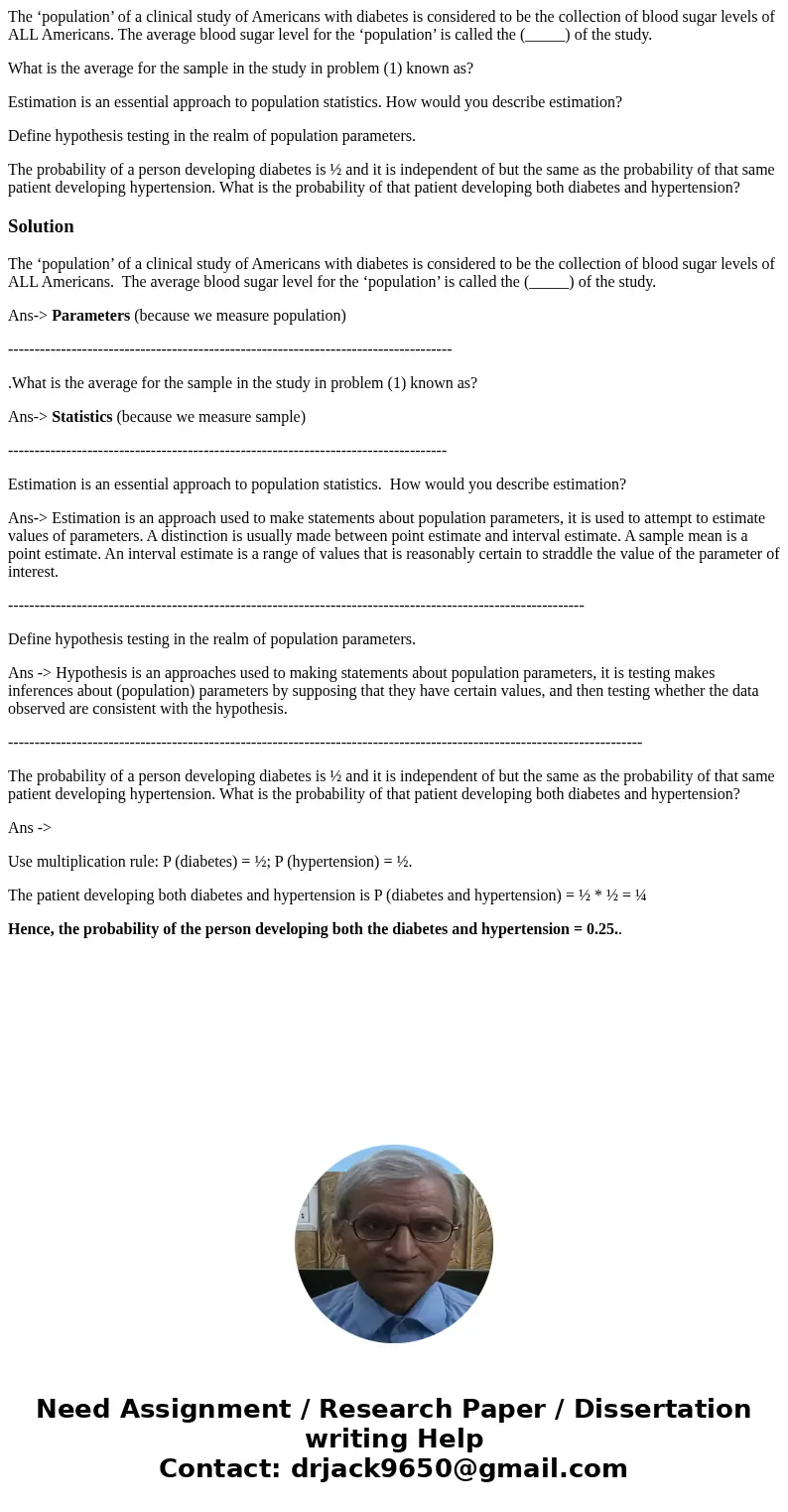The population of a clinical study of Americans with diabete
The ‘population’ of a clinical study of Americans with diabetes is considered to be the collection of blood sugar levels of ALL Americans. The average blood sugar level for the ‘population’ is called the (_____) of the study.
What is the average for the sample in the study in problem (1) known as?
Estimation is an essential approach to population statistics. How would you describe estimation?
Define hypothesis testing in the realm of population parameters.
The probability of a person developing diabetes is ½ and it is independent of but the same as the probability of that same patient developing hypertension. What is the probability of that patient developing both diabetes and hypertension?
Solution
The ‘population’ of a clinical study of Americans with diabetes is considered to be the collection of blood sugar levels of ALL Americans. The average blood sugar level for the ‘population’ is called the (_____) of the study.
Ans-> Parameters (because we measure population)
------------------------------------------------------------------------------------
.What is the average for the sample in the study in problem (1) known as?
Ans-> Statistics (because we measure sample)
-----------------------------------------------------------------------------------
Estimation is an essential approach to population statistics. How would you describe estimation?
Ans-> Estimation is an approach used to make statements about population parameters, it is used to attempt to estimate values of parameters. A distinction is usually made between point estimate and interval estimate. A sample mean is a point estimate. An interval estimate is a range of values that is reasonably certain to straddle the value of the parameter of interest.
-------------------------------------------------------------------------------------------------------------
Define hypothesis testing in the realm of population parameters.
Ans -> Hypothesis is an approaches used to making statements about population parameters, it is testing makes inferences about (population) parameters by supposing that they have certain values, and then testing whether the data observed are consistent with the hypothesis.
------------------------------------------------------------------------------------------------------------------------
The probability of a person developing diabetes is ½ and it is independent of but the same as the probability of that same patient developing hypertension. What is the probability of that patient developing both diabetes and hypertension?
Ans ->
Use multiplication rule: P (diabetes) = ½; P (hypertension) = ½.
The patient developing both diabetes and hypertension is P (diabetes and hypertension) = ½ * ½ = ¼
Hence, the probability of the person developing both the diabetes and hypertension = 0.25..

 Homework Sourse
Homework Sourse